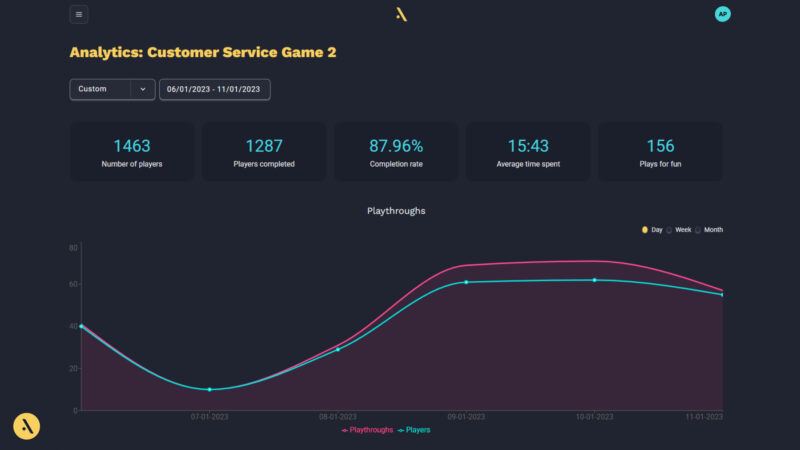Training And Development In 2023
Training and development is a crucial aspect of any organization, as it helps employees improve their skills and knowledge, adapt to new technologies and processes, and become more productive and effective in their roles. As we look toward the year that is unfolding, there are several core trends that are shaping the global landscape of training and development. Here are some key considerations for organizations looking to optimize their training and development programs in the coming year.
Key Considerations For Optimizing Training And Development Programs
1. Remote Work And Virtual Training
The COVID-19 pandemic has accelerated the trend towards remote work and virtual training, as many employees have been forced to work from home and attend training sessions online. This trend is likely to continue in the coming years, as companies recognize the benefits of remote work and the potential for cost savings and increased productivity. As a result, organizations will need to invest in virtual training platforms and tools, and develop strategies for delivering high-quality, engaging training content online. According to a McKinsey report, the working and training assumptions that led to growth in the past may no longer be valid today, on account of the COVID-19 crisis, and that will change the way most do business over the next five years [1]. Working and training can now happen anywhere, anytime, and whoever does not sail in that direction might face higher employee turnover challenges, as per this 2022 Workforce study [2].
2. Gamification And Interactive Content
Lots of companies promote 3D solutions for learning that have significant costs behind them, and imply unexpected requirements of special equipment. This year, that type of expensive learning is no longer under the spotlight.
The trends are pointing toward a sustainable and more interactive kind of training in 2023, where everybody can participate in tailoring the content while enjoying a simulation of the reality that equips people for real challenges, within a safe space, and without extra costs. And since everybody owns a 2D device, there is no need to purchase expensive equipment for training; now everybody can use their own device to train and boost their soft and hard skills.

Training can be more effective and engaging when it is interactive and immersive, and when it incorporates elements of gamification and play. In 2023, organizations will need to use interactive content and gamification to make training more engaging and effective, using techniques such as simulations, Virtual Reality, and games to deliver learning experiences that are fun and immersive. According to a Gallup study, having disengaged employees causes organizations great losses in productivity [3].
The learning experience makes an impact on the users when there is an association of sentiment to the learning journey. The emotions are the ingredient that makes the new notions stay and be successfully internalized, while keeping people engaged and highly motivated in their tasks [4]. And that is exactly what gamified learning solutions do: keep the motivation high and people happy at work.
3. Personalization And Individualization
With the increasing availability of data and technology, it is becoming easier to tailor training programs to the specific needs and preferences of individual learners. Personalized and individualized training programs can be more effective, as they take into account the unique learning styles, backgrounds, and goals of each learner. In 2023, organizations will need to adopt approaches to training that are more personalized and individualized, using data and analytics to understand the needs of their employees and deliver targeted, relevant training content.

Knowing that over 30% of the skills required a couple of years ago will soon become obsolete (according to a Gartner study), the best option in these constantly changing times is to provide learners with the right tools to permanently update their training, while keeping it relevant for their skills and job requirements through high personalization and flexibility [5]. Personalization according to capabilities and learners’ progression is the key to driving successful learning content that resonates with people, while motivating them to overcome their limitations. This ensures learners stay updated, engaged, and ready for change whenever the business requires it, according to this article.
4. Microlearning And Bite-Sized Content
In today’s fast-paced and attention-deficit world, it can be difficult for learners to focus on long, traditional training sessions. As a result, there has been a trend toward microlearning and bite-sized content, which allows learners to absorb information in smaller, more manageable chunks. This year, organizations will need to adopt training solutions that are more flexible and adaptable, using nano or microlearning and other approaches, to deliver content in shorter, more digestible formats. The efficiency of this type of learning is not questionable, showing significant improvements in the learner’s progress, as per this PhD research [6]. It is clear that this year, when talking about learning, less is more.
5. Cultural Competency And Diversity
As the world becomes more connected and diverse, it is important for organizations to be culturally competent and inclusive in their training and development programs. In 2023, organizations will need to develop training programs that are sensitive to cultural differences and that promote diversity, equity, and inclusion. This may involve incorporating content on cultural competency and diversity into training programs, as well as developing strategies to ensure that all employees have access to training and development opportunities. Counting on a platform that easily adapts and tailors the difficulty according to the user’s capabilities and learning rhythms is the key to successfully embracing diversity in corporate training.
6. Constantly Updated Training, And A Flexible Learning Platform
Because the times have changed and people prioritize their well-being at work, putting high emphasis on improving quality, increasing innovation, and worker happiness (as per a study led by Deloitte), the same values are appreciated when it comes to training and continuous upskilling [7]. Delivering updated learning content across multiple Learning Management Systems (LMSs) is not easy. But for achieving lasting behavior change, it is a must.
That is why it is highly important to count on a flexible, easygoing, innovative but intuitive learning platforms that encourage the users to access and engage with the content quickly and efficiently. On top of this, transforming the platform into a collaborative space, where teams can put in their two cents and keep the content evolving, is key to reaching the right audience and their evolving needs.
The learners need to be able to easily access training in the flow of work. This is why emerging technologies like streaming services will cover these needs and provide instant access to immersive and relevant content. Counting on a practical solution that can efficiently distribute content and make it available for continuous updates in the learner’s moment of need is also key to successfully reaching the goal.
Therefore, the chosen platform must be able to facilitate constant updates and be built with flexibility in mind, giving space for all ages and all qualifications to step in and tailor the training when needed. For this reason, using technologies that take advantage of API integrations, full automation integration, and technologies like WebRTC to deliver content is essential this year.
7. The Shift Toward Learning Experience Platforms
The shift this year will be toward Learning Experience Platforms (LXPs), the Artificial Intelligence (AI) learning platforms delivered using software as a service (SaaS), with the goal of leaving behind the obsolete systems where it was a hassle to carry out integrations. These new systems allow for content creation, gamification elements, and chatbox, while providing the user with analytics of the learner’s performance and easy integration with eLearning providers.
Some of the benefits of these LXPs are a high degree of personalization of the learning content, agile learning through microlearning, and high flexibility for the learners when it comes to methodology and schedules. What makes the difference this year is the trend towards the democratization of the learning experience, and the autonomy that is given to the users: they get full control of their learning paths. Last but not least, most HR departments struggle with human resources management and integrating the learning and growth modules into their systems. This is why 2023 has come with innovative technologies that allow hassle-free integration and very intuitive deployment of the training systems.
Having a corporate learning strategy to address the complexities that come with delivering training across multiple systems is critical. This is why the system flexibility and intuitiveness of the learning platforms are essential, according to this PWC Global Workforce Hopes and Fears report [8].
Final Word
The more highly skilled employees an organization counts on, the more prepared it is for the rapid future changes, and therefore the more chances it has to thrive long-term. Overall, the global landscape of training and development is likely to continue evolving in 2023 and beyond, as organizations seek to meet the changing needs of their employees and the business. By adopting a flexible, personalized, innovative, hassle-free, and interactive approach to training, organizations can ensure that they are well-prepared to meet the challenges and opportunities of the future. Embracing these new possibilities in times of crisis is what drives growth and adapts the core to meet shifting customer needs [1].
References:
[1] Innovation in a crisis: Why it is more critical than ever
[2] People at Work 2022: A Global Workforce View
[3] The World’s $7.8 Trillion Workplace Problem
[4] Gamification of Learning Management Systems for Improved Student Engagement and Learning Outcomes
[5] Stop Training Employees in Skills They’ll Never Use
[6] EFFECTIVENESS OF BITE-SIZED LECTURE ON STUDENT LEARNING OUTCOMES
[7] Diving deeper: Five workforce trends to watch in 2021
[8] Hopes and fears 2021: The views of 32,500 workers
Image Credits:
All images featured within the body of the article have been created/supplied by the authors.
